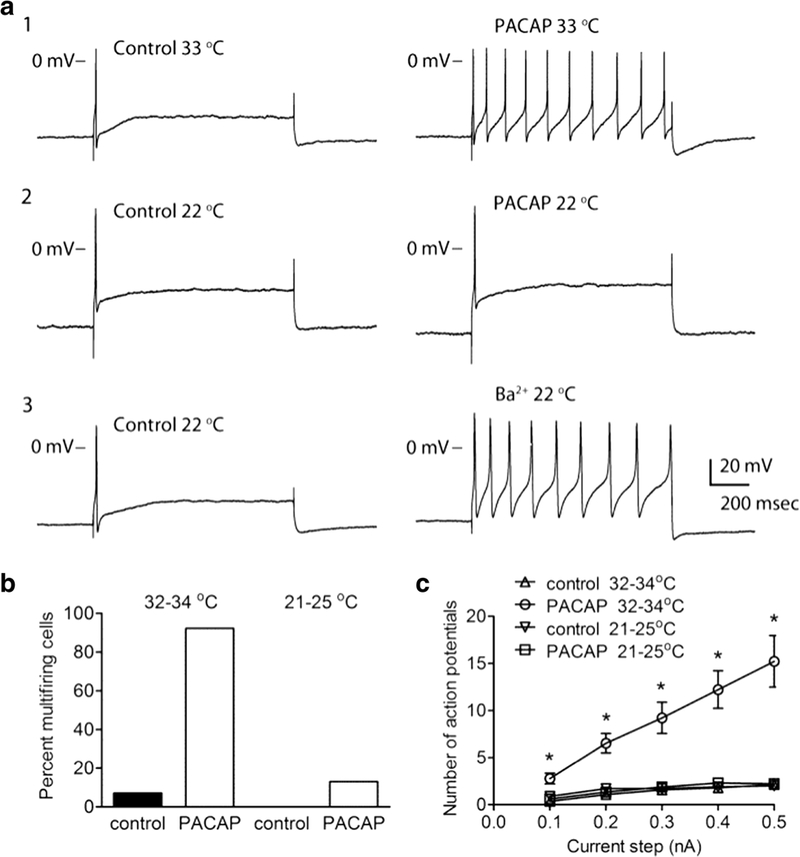Figure 2.

PACAP-induced increase in excitability is temperature-sensitive. A: Recordings from different cells showed that 20 nM PACAP increased excitability when the bath solution was 33°C (A1), but not when the bath temperature was 22°C (A2). The recording in A3 demonstrated that the addition of 1 mM BaCl2 (Ba2+) increased excitability at 22°C. In all three recordings, the cells exhibited a phasic firing pattern prior to the addition of PACAP (A1, 2) or barium (A3). The firing pattern shifted to multiple firing in A1 and A3, but not in A2. The amplitude of the 1 sec depolarizing current pulse was 0.3 nA in each experiment. B: The percentage of cells exhibiting multiple firing in 20 nM PACAP was significantly greater when the temperature was 32 – 34°C (n = 13 cells) than when the bath temperature was 21 – 25°C (n = 23 cells; Fisher’s exact test, Ρ < 0.0001; Also, at 32 – 34°C: control (n = 28) vs. PACAP (n = 13), significantly different, Ρ < 0.0001; at 21 – 25°C: control (n = 10) vs PACAP (n = 23), not significantly different, Ρ = 0.5363). C: Averaged excitability curves generated in the cells maintained at either 33 – 34°C or 21 – 25°C prior to and during exposure to 20 nM PACAP. The number of action potentials generated at each current step was significantly greater (P< 0.003, indicated by asterisks) at the warmer temperature in the presence of PACAP (n = 13) when compared to untreated control at warm temperature (n = 28), and to PACAP at room temperature (n = 23). The number of action potentials generated at each current step was not different between untreated control (n=10) and PACAP at room temperature. Reprinted with permission from the Journal of Neuroscience (Merriam et al, 2013).
